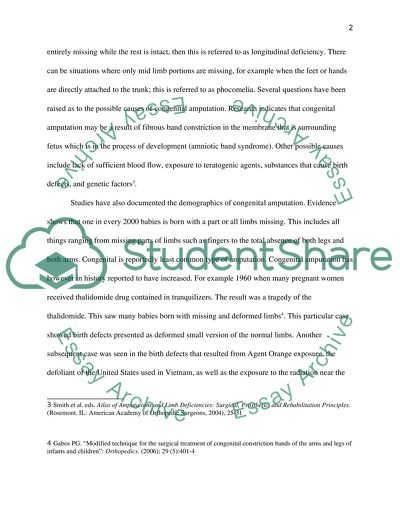Cite this document
(“Children born as Amputees from amniotic band syndrome Research Paper”, n.d.)
Retrieved from https://studentshare.org/health-sciences-medicine/1404620-children-born-as-amputees-from-amniotic-band
Retrieved from https://studentshare.org/health-sciences-medicine/1404620-children-born-as-amputees-from-amniotic-band
(Children Born As Amputees from Amniotic Band Syndrome Research Paper)
https://studentshare.org/health-sciences-medicine/1404620-children-born-as-amputees-from-amniotic-band.
https://studentshare.org/health-sciences-medicine/1404620-children-born-as-amputees-from-amniotic-band.
“Children Born As Amputees from Amniotic Band Syndrome Research Paper”, n.d. https://studentshare.org/health-sciences-medicine/1404620-children-born-as-amputees-from-amniotic-band.


